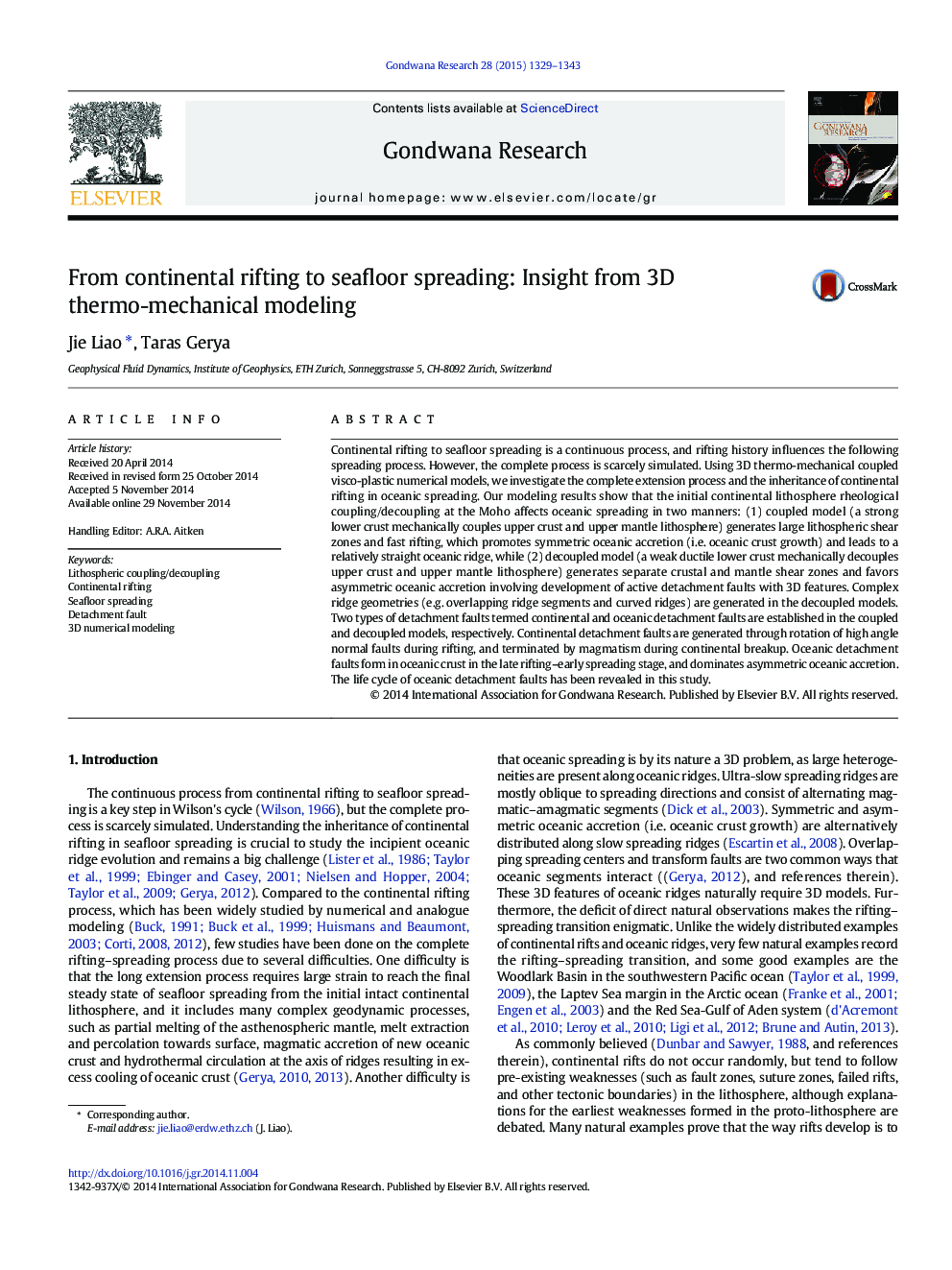| کد مقاله | کد نشریه | سال انتشار | مقاله انگلیسی | نسخه تمام متن |
|---|---|---|---|---|
| 4726694 | 1356343 | 2015 | 15 صفحه PDF | دانلود رایگان |

• We model the complete extension from continental rifting to seafloor spreading.
• Initial lithospheric coupling/decoupling influences incipient oceanic accretion.
• Evolutions of continental and oceanic detachment faults are revealed.
Continental rifting to seafloor spreading is a continuous process, and rifting history influences the following spreading process. However, the complete process is scarcely simulated. Using 3D thermo-mechanical coupled visco-plastic numerical models, we investigate the complete extension process and the inheritance of continental rifting in oceanic spreading. Our modeling results show that the initial continental lithosphere rheological coupling/decoupling at the Moho affects oceanic spreading in two manners: (1) coupled model (a strong lower crust mechanically couples upper crust and upper mantle lithosphere) generates large lithospheric shear zones and fast rifting, which promotes symmetric oceanic accretion (i.e. oceanic crust growth) and leads to a relatively straight oceanic ridge, while (2) decoupled model (a weak ductile lower crust mechanically decouples upper crust and upper mantle lithosphere) generates separate crustal and mantle shear zones and favors asymmetric oceanic accretion involving development of active detachment faults with 3D features. Complex ridge geometries (e.g. overlapping ridge segments and curved ridges) are generated in the decoupled models. Two types of detachment faults termed continental and oceanic detachment faults are established in the coupled and decoupled models, respectively. Continental detachment faults are generated through rotation of high angle normal faults during rifting, and terminated by magmatism during continental breakup. Oceanic detachment faults form in oceanic crust in the late rifting–early spreading stage, and dominates asymmetric oceanic accretion. The life cycle of oceanic detachment faults has been revealed in this study.
Figure optionsDownload as PowerPoint slide
Journal: Gondwana Research - Volume 28, Issue 4, December 2015, Pages 1329–1343